The 1990s was a decade of breakthroughs for video gaming. It is the decade in which serious, immersive games were born thanks to technological advancement. Some of the greatest games of all time were released in the 1990s, especially when it comes to role-playing games (RPGs) which were generally far more advanced and complex back then compared to now. 1998 stands out as one of the best years in gaming history, with a plethora of amazing releases.
In this article we will look at the greatest games of the 1990s (1990-1999 specifically), giving out awards similar to our Game of the Year awards and our previous Game of the Decade article. This will be the last Game of the Decade article until the 2010s are over, so you don’t want to miss this one! You may notice some awards were excluded, including an overall Game of the Decade award. Some awards were excluded because gaming was very young at this time and some genres were underdeveloped, while an overall Game of the Decade award was not chosen because it’s too subjective as there are so many different games belonging to different genres.
Best Sound Effects
Game Title: Thief: Gold
Release Date: 1999
Developed By: Looking Glass Studios
Published By: Eidos Interactive
Platforms: PC
Genre: Stealth
Many 1990s PC games had surprisingly advanced sound processing, beyond what most games today have. Our winner is of course one of such games, and that game is Thief: Gold (1999), re-release of Thief: The Dark Project one year prior.
This advanced sound processing comes from the use of DirectSound3D and EAX, bringing things like 3D HRTF with realistic rendering of dynamic echoes and reverb, environmental occlusion, and more. Thief showcases this better than any other 1990s game, and it’s a magnificent feature for this type of game. Doors and walls and floors/ceilings dynamically block out some but not all noise (environmental occlusion), the dynamic reverb is actually better than most modern day games thanks to EAX (you can really hear echoes traveling down hallways for example), footsteps make different sounds on different terrain surfaces, and the developers made sure all sounds are loud enough. Ambient sounds are amazingly atmospheric in this game. Modern stealth games can really learn from the first two Thief games.
Other Nominees
- System Shock 2 (1999)
- Unreal Tournament (1999)
- Unreal (1998)
Best Graphics (3D)

Game Title: Unreal Tournament
Release Date: 1999
Developed By: Epic Games / Digital Extremes
Published By: GT Interactive / Infogrames / Secret Level
Platforms: PC / Linux / Mac / PlayStation 2 / Dreamcast
Genre: FPS
Since the difference between 2D graphics usually boiled down to artistic preferences at the time, we decided to focus this award exclusively on 3D games for a more objective approach. We look at technical graphics first and foremost as always. The best looking 3D game of the 1990s had to be Unreal Tournament (1999). It was ahead of its time and showed better texture quality as well as more advanced shading and lighting than other 3D games from that time period.
Best Multiplayer

Game Title: Unreal Tournament
Release Date: 1999
Developed By: Epic Games / Digital Extremes
Published By: GT Interactive / Infogrames / Secret Level
Platforms: PC / Linux / Mac / PlayStation 2 / Dreamcast
Genre: FPS
For the 1990s, we are only doing one multiplayer award because there really weren’t that many co-op games available. Versus games dominated the multiplayer landscape. It was a difficult decision between several excellent games that far surpass most of today’s multiplayer shooters, but we went with Unreal Tournament, a Sci-Fi arena shooter known for both its quantity and quality of content, numerous game modes (an area where this franchise has always excelled above the competition), competitive nature, and moddability.
Other Nominees
- Quake III Arena (1999)
- Counter-Strike (1999, mod for Half-Life)
Best Quest Design
Game Title: Planescape: Torment
Release Date: 1999
Developed By: Black Isle Studios
Published By: Interplay Entertainment
Platforms: PC / Linux / Mac
Genre: RPG
This award goes to a single player story driven game designed around immersion whose quest design is truly remarkable and creative, transcending generic repetitive typical game quests like “Go here and shoot everyone and then return to me”. So this award naturally excludes a lot of excellent shooters such as DOOM, and it naturally includes a lot of RPGs but other types of games as well. The 1990s really showcased some of the best quest design in video game history with select few titles. Of all of these titles, we had to go with Planescape: Torment (1999) but it was certainly closely contested. Following in the footsteps of Fallout and Fallout 2 made by the same studio, Planescape: Torment edges those out by ensuring every single quest in the game is unique and meaningful. You could say Fallout and Fallout 2 do that too, but some of those side quests especially in Fallout 2 are nothing more than fourth wall breaking movie referencing memes that are widely agreed upon as being too blunt.
Every quest in Planescape: Torment touches upon at least one of its themes, and involves a unique character that is almost out of a book rather than a video game. This combined with quests not revolving around repetitive actions like just killing people or retrieving some item and bringing it back to someone (and even when there is a quest like the latter, it is surrounded by unique content and there’s a very good reason for it) makes every quest a wonderful experience. Amusingly enough, one small series of quests required to become a Mage is deliberately mundane and stereotypes quest design of other video games, but it never gets to the point where it feels painfully tedious. When the gig is revealed, it’s actually creative and well designed.
Quests in Planescape: Torment often revolve around the unique, hard to understand nature of the Planescape multiverse, such as finding the unique “key” to activate portals (the key can be anything from an object to a feeling). Despite the weirdness, there is an underlying logical consistency to it all, which is vital to good world building, something its spiritual successor Torment: Tides of Numenera fails to do.
Other Nominees
- Fallout (1997)
- Fallout 2 (1998)
- Thief: Gold (1999)
Best Story, Writing
Game Title: Planescape: Torment
Release Date: 1999
Developed By: Black Isle Studios
Published By: Interplay Entertainment
Platforms: PC / Linux / Mac
Genre: RPG
Planescape: Torment (1999) had not only the best story/writing of the 1990s, but also the best of all time in video gaming. It really is on a different level than every other game, even our #2 pick in the aforementioned article, when it comes to overall writing quality. It is a PC exclusive RPG utilizing Advanced Dungeons & Dragons rules, and is set in the Planescape setting as the name implies. It’s truly a once in a lifetime game.
The story is deep with many layers, yet it makes sense, adheres to logic, and doesn’t leave gaping plot holes. But perhaps the most impressive part is despite its scale, being a 40-60 hour RPG with a branching plot and dialogue that react greatly to player choice, there probably isn’t a conversation or dialogue in the entire game that doesn’t make you stop and say “Wow, this is really well written!” Certainly the best dialogue overall in gaming, with numerous entries on our list of best quotes. It has its own distinct language and vocabulary right from the get go.
Planescape: Torment also makes everyone a character, even NPCs involved only in side quests and even NPCs involved in no quests at all! Anyone you can exchange words with is uniquely written, and through descriptive writing in conversations which describe these characters and their behavior and traits, it makes every single person a unique character. Other games have NPCs that are nothing more than quest-giving robots, but not here. Everyone who you can speak to, important or not, is their own person. And remember that this is a vast 40-60 hour non-linear RPG we’re talking about that lets you interact with hundreds of characters.
Best Publisher
This award is not dedicated to a specific game, but to a game publishing studio. What we look for with this award is the publisher who helped release great games and had strong pro-consumer practices. We give this award to Electronic Arts, better known as EA. This might be surprising to many, but EA used to be the gold standard for quality games. Fun fact: the logo above is the one they used from 1982 – 2000.
Noteworthy titles EA published during the 1990s include the Need for Speed series, Wing Commander series, Dungeon Keeper series, Ultima Online which popularized the MMO genre, Command & Conquer series, Medal of Honor, Madden series, and FIFA series. No doubt EA was a major contributor to the growth of gaming on all platforms. A very, very different company than the EA today.
Other Nominees
- Valve Corporation
- Interplay
- Sierra Studios
Best Racing Game
Game Title: Gran Turismo 2
Release Date: 1999
Developed By: Polyphony Digital
Published By: Sony
Platforms: PlayStation
Genre: Racing
This was one of the easiest genres to pick a winner for, since Gran Turismo 2 was far ahead of its time. Featuring a whopping 650 cars which was hard to fathom at the time, strong variety in cars and tracks, and some of the finest driving physics in the world at the time seeking a middle ground between driving simulation and more casual racing. Gran Turismo 2 had very little in the way of competition.
We also saw the first Hot Pursuit title in the Need for Speed franchise in the 1990s, and Diddy Kong Racing is an excellent mix of adventure and racing in which you race not only carts but also hovercrafts and planes in a plot focused adventure environment—a unique take on racing plus adventure that may not have been attempted since.
Other Nominees
- Diddy Kong Racing (1997)
- Need for Speed III: Hot Pursuit (1998)
Best Shooter Game
Game Title: Unreal
Release Date: 1998
Developed By: Epic Games
Published By: GT Interactive
Platforms: PC / Mac
Genre: FPS
For some unknown reason, Unreal (1998) is sort of overlooked in the context of all time great FPS games. People don’t deny that it deserves this status, but it gets overlooked in favor of Half-Life and most of all Unreal Tournament. Especially nowadays since there are far more Unreal Tournament than Unreal games.
Unreal was the game that started it all for Epic Games. Of all fast paced, action packed single player FPS games, Unreal accomplishes the most. It accomplishes more than any Half-Life game, any DOOM game, any Wolfenstein game, any Turok game, Prey, Crysis, and certainly any Halo game. It is unparalleled in gunplay and combat, AI, environmental diversity (both artistic and functional), enemy diversity is matched by very few, and it has two full length campaigns thanks to the Return to Na Pali expansion which comes with Unreal Gold. It really does it all, having legendary modding potential and multiplayer although its multiplayer is certainly no match for Unreal Tournament.
It is a real shame that the series went the route that it did; Unreal II: The Awakening was alright, but a huge step down from this, the same for Unreal Tournament 3 and Unreal Tournament 4 is vaporware.
Other Nominees
- System Shock 2 (1999)
- Quake (1996)
- Tom Clancy’s Rainbow Six: Rogue Spear (1999)
- Half-Life (1998)
- Unreal Tournament (1999)
- Duke Nukem 3D (1996)
- Shadow Warrior (1997)
- Turok 2: Seeds of Evil (1998)
- Turok: Dinosaur Hunter (1997)
- Quake III (1999)
Best Stealth Game
Game Title: Thief: Gold
Release Date: 1999
Developed By: Looking Glass Studios
Published By: Eidos Interactive
Platforms: PC
Genre: Stealth
We only had one clear cut nominee and thus winner for Best Stealth Game of the 1990s, and it’s Thief: Gold (1999). Console gamers may find this surprising given the fact that Metal Gear Solid also released this decade, but the truth is Thief is on a much higher level than any Metal Gear Solid game. Metal Gear Solid V: The Phantom Pain does free that franchise of many shackles that held it back, but it is such a different kind of game that’s only really noteworthy for some of the AI features. But I digress.
Every stealth game needs to take from the first two Thief games. The best ones do, like Dishonored, which along with the first two Thief games are the only pure stealth games we consider satisfactory (granted they are more than satisfactory, all three are excellent). There’s such a big gap between these games and the rest. Thief: The Dark Project starts simple; you play as Garrett, a highly skilled thief for hire, but when one employer hires you to steal something very special and when it’s discovered he’s not all that he appears, things change.
It is a Steampunk world with some of the most distinct atmosphere of any game. Thief has you sneaking past city guards even within official buildings, mages even within a magic school, undead in massive and creepy crypts, demons and elementals in haunted places, and more. Every level is non-linear and very complex, often maze-like. See this comparison picture of Thief II: The Metal Age level 2 versus the first real level of the latest Thief game in 2014. Thief: The Dark Project and Thief II are on the same level with regard to level design, and Thief (2014) is on the same level as most modern stealth games.
So like its successor, Thief: The Dark Project (and of course its nearly identical re-release) humiliate most other stealth games. All but Dishonored and Metal Gear Solid V really, and the latter avoids humiliation just by being too different for many direct comparisons to be made. Note we aren’t counting the Hitman games in these comparisons, as Hitman is a completely different kind of stealth.
Thief: The Dark Project includes mostly dynamic light sources which the player can put out or ignite, and it has very advanced gameplay mechanics. Different surface types like grass floor, wood floor, tile floor, and far more each make different levels of sound (and of course different sounds to begin with) greatly influencing sneaking. Doors and walls and ceilings and the like actually block out a lot of noise. You can interact with essentially any object, having the ability to pick them up and throw them to create distractions. Your bow is your best friend not to mention a multi-purpose tool, letting you shoot water arrows to put out fire-based light sources or fire arrows to light them or ignite foes, or holy water arrows to fight off the undead, rope arrows to climb to places you can’t normally reach, noisemaker arrows to create distractions, moss arrows to create a quiet surface to sneak on, and more. Furthermore you can climb any ledge, to make it as open ended as possible. It even has different and unique quests based on the difficulty setting you’re playing on.
Thief was truly so far ahead of its time. Aside from Thief II and to a lesser extent Thief: Deadly Shadows, Dishonored is the only game that can compare and it came out 14 years later. So this was a clear cut, easy win for Thief: The Dark Project, as it was for its successor for the equivalent award for the following decade (2000-2009).
Other Nominees
- System Shock 2 (1999)
Best Horror Game
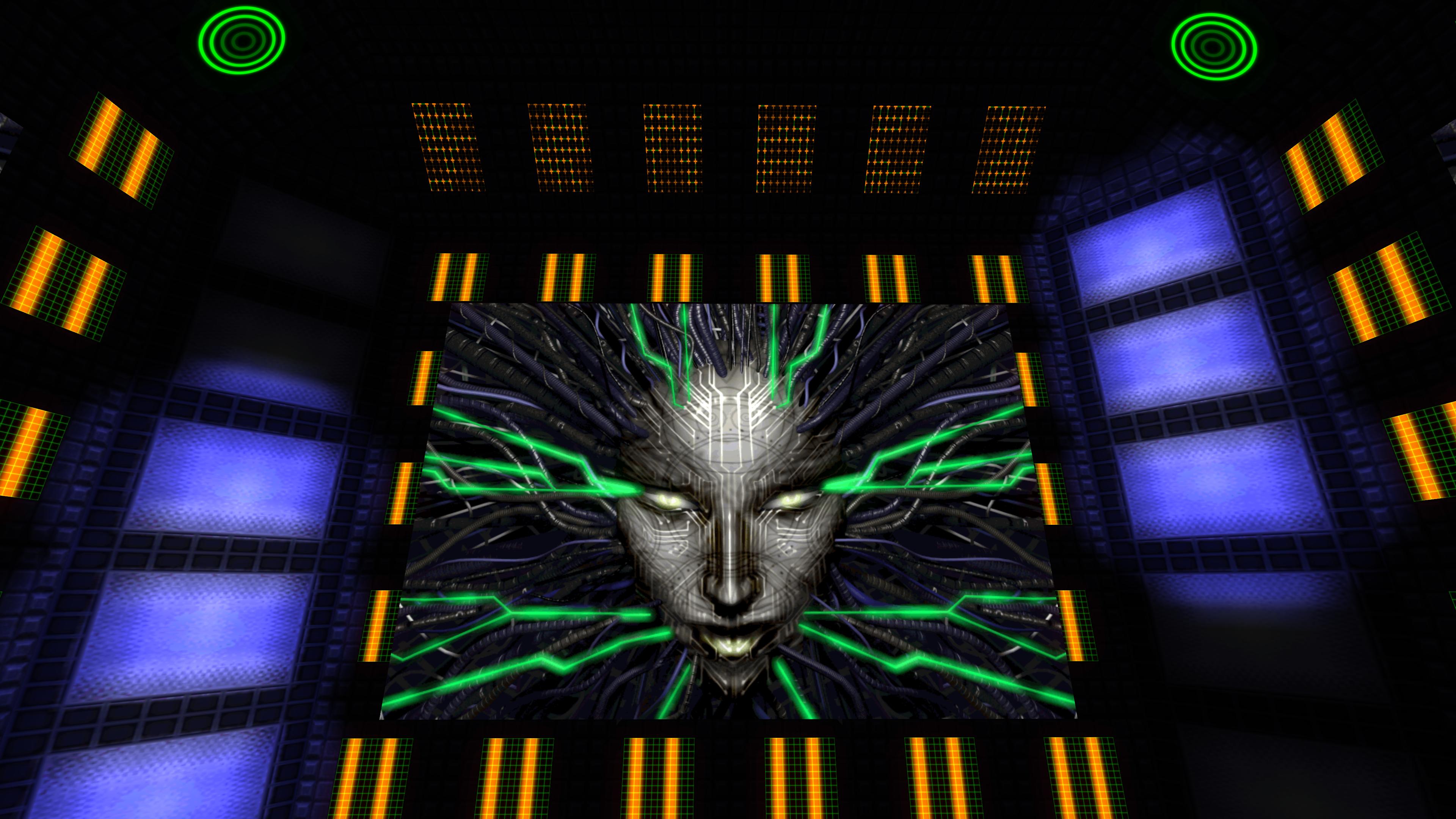
Game Title: System Shock 2
Release Date: 1999
Developed By: Looking Glass Studios / Irrational Games
Published By: Electronic Arts
Platforms: PC / Linux / Mac
Genre: Survival Horror / FPS
The 1990s was the birth of the horror genre. We have named System Shock 2 (1999) the greatest horror game of the 90s. It succeeds on every level, being one of the best space horror stories in modern times. The survival horror gameplay remains a benchmark to this day, not having the “tank controls” of other horror games at the time but being an FPS-survival horror experience with RPG elements. The diversity of character builds and RPG-inspired gameplay depth remain unparalleled for a game that isn’t a full fledged RPG, the level of interaction with the game world is on a level few games reach, the world is so rich with detail beyond any game of its type, the enemy design is nice and varied and thoughtfully conveys the themes presented by the two antagonists. System Shock 2 does it all with no major missteps.
Other Nominees
- Silent Hill (1999)
Best RPG
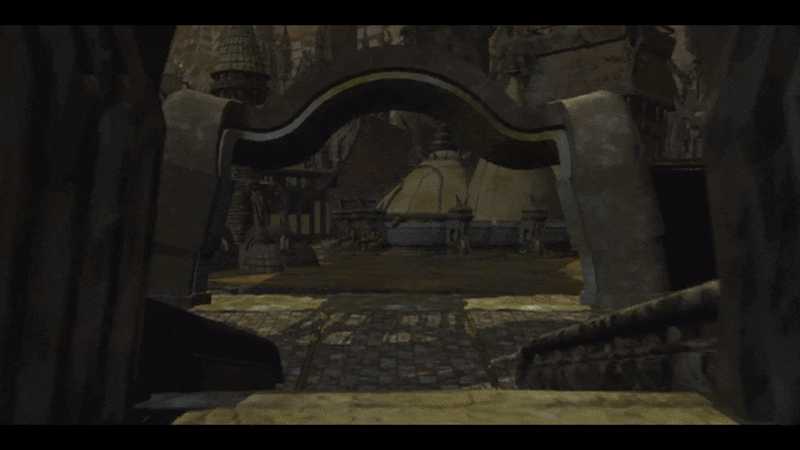
Game Title: Planescape: Torment
Release Date: 1999
Developed By: Black Isle Studios
Published By: Interplay Entertainment
Platforms: PC / Linux / Mac
Genre: RPG
1990s PC gaming is known for its RPGs about as much as it’s known for its shooters. This was by far the hardest decision as it came down to two phenomenal RPGs, both industry leading in their own way. Either one is perhaps equally worthy but we had to choose one, so we chose Planescape: Torment (1999) because we consider it a bigger stepping stone for general RPG design.
This award boiled down to Fallout 2 versus Planescape: Torment which were both made by the same studio (Black Isle Studios, who had to be the most talented studio of all time). While Fallout 2, our runner up, does in fact have the most role-playing of any video game RPG, it still has less role-playing than pen and paper RPGs. So we had to ask, what does Fallout 2 do for RPGs as a whole? It brings video game RPGs closer to the level of role-playing that pen and paper RPGs have, in a single player only context. An ambitious goal that the game lives up to, but then consider Planescape: Torment; it doesn’t have quite as much role-playing as Fallout 2, but it comes rather close, but its storytelling is revolutionary for RPGs. Planescape: Torment is some sort of merge between video gaming, RPGs, and literature for its text heavy emphasis. This is an unparalleled accomplishment to this day, it is one of the absolute biggest statements for video gaming/video game role-playing as a serious storytelling medium, certainly a bigger statement than Fallout 2 and any other RPG.
Planescape: Torment and the first two Fallout games are so unlike modern games. Even Fallout: New Vegas and The Elder Scrolls V: Skyrim, two open world RPGs, consists of quests in which the player is told to go somewhere specific, do something, and return. This is how pretty much all marked quests are designed in these games and all others. But Planescape: Torment and the first two Fallout games? No unrealistic hand holding, they encourage logical thinking and player creativity to pursue objectives without a magical hand guiding you. As a result, the quests have more ways to approach them and complete them.
Planescape: Torment is one of those games that raised the bar so high for its respective genre/subgenre that it has never again been reached.
Other Nominees
- Fallout 2 (1998)
Dark Horse of the Decade
Game Title: Turok: Dinosaur Hunter
Release Date: 1997
Developed By: Iguana Entertainment
Published By: Acclaim Entertainment
Platforms: PC / Nintendo 64
Genre: FPS
Before moving onto Game of the Decade, we must first name our Dark Horse of the Decade. This award goes to a game that was not hyped by the industry, but turned out to be great anyway. This was honestly a difficult award to choose, as most of our favorite games of the 1990s were hyped and anticipated by many, including every other winner in this entire award ceremony. The winner of this award is Turok: Dinosaur Hunter (1997). Nobody knew what to expect from this relatively unknown studio, yet it resulted in a popular shooter that was recently remade.
Turok had numerous innovations for its genre, like the thorough platforming involved. Like other shooters it has many hidden areas on the levels, but some of Turok’s stand out for being massive, like the one shown in this video below starting at 4:09; a sprawling dungeon that’s out of the way and not required to finish the game. Note the video is of the remaster, but hardly anything is different.
Of course Turok is most known for two things: its setting, namely the jungle themed setting with dinosaurs, although it also extends to ancient cities with temples and even highly futuristic Sci-Fi atmosphere. The other thing it is most known for is its very unique weapons, which got even better in the first sequel.

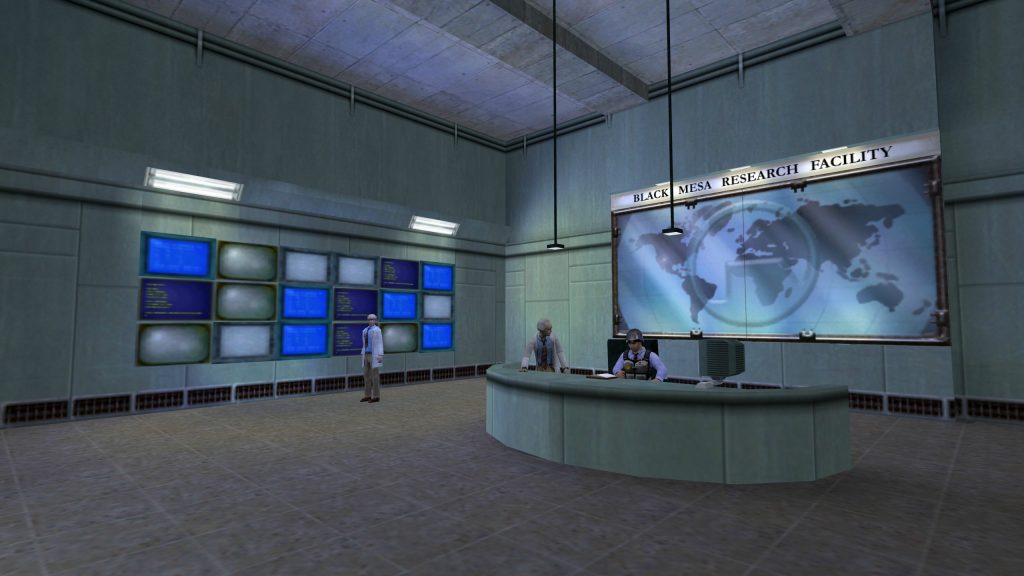

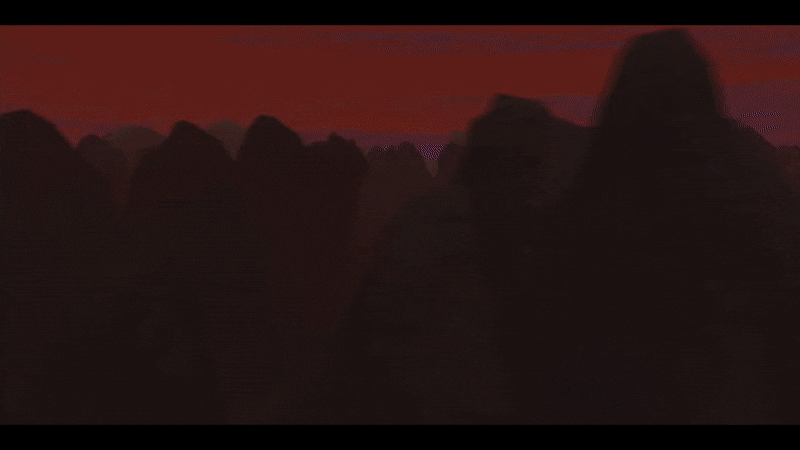







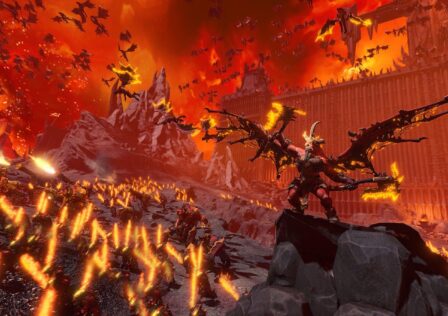
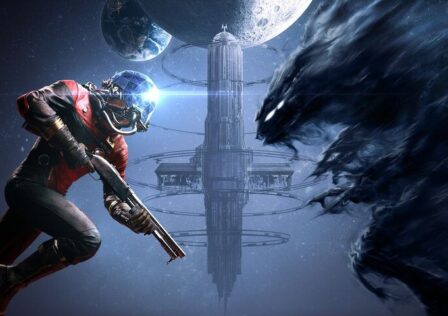
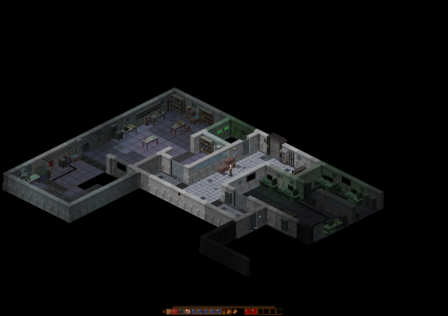
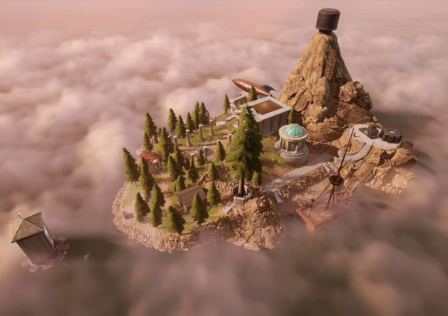



Half Life was my go-to FPS back in the 90’s. Lots of time spent on multiplayer as well. “Crossfire” map was the best.
Half Life was my go-to FPS back in the 90’s. Lots of time spent on multiplayer as well. “Crossfire” map was the best.
While it isn’t really different from other shooters from that time (mods, key hunting, mostly linear levels with interconnected segments that you can aproach in multiple ways, secrets, enemy placement that encourage mobility, plenty of weapons and things to shoot at), Duke 3D stands out in its setting. It is a parody of action movies which oozes of details, it makes the levels more distinct from each other. Instead of blocks of brown walls, you have a theater, a fast-food, a police station, spaceships etc… There are also more things you can interact with, which makes the world even more… Read more »
You’re right, along with Shadow Warrior
And Blood.
That said, I’ve refrained from mentioning those because they were technologically outdated at the time of their release, Duke 3D wasn’t.
I never beat Blood, it seemed too flat to me – as if it wasn’t designed with vertical mouse look in mind, which would be a symptom of being outdated. So much is lost without incorporating the Y axis into gameplay, like with Doom and Doom 2. But I do need to finish it and definitely Duke 3D which I hadn’t played when I wrote this.